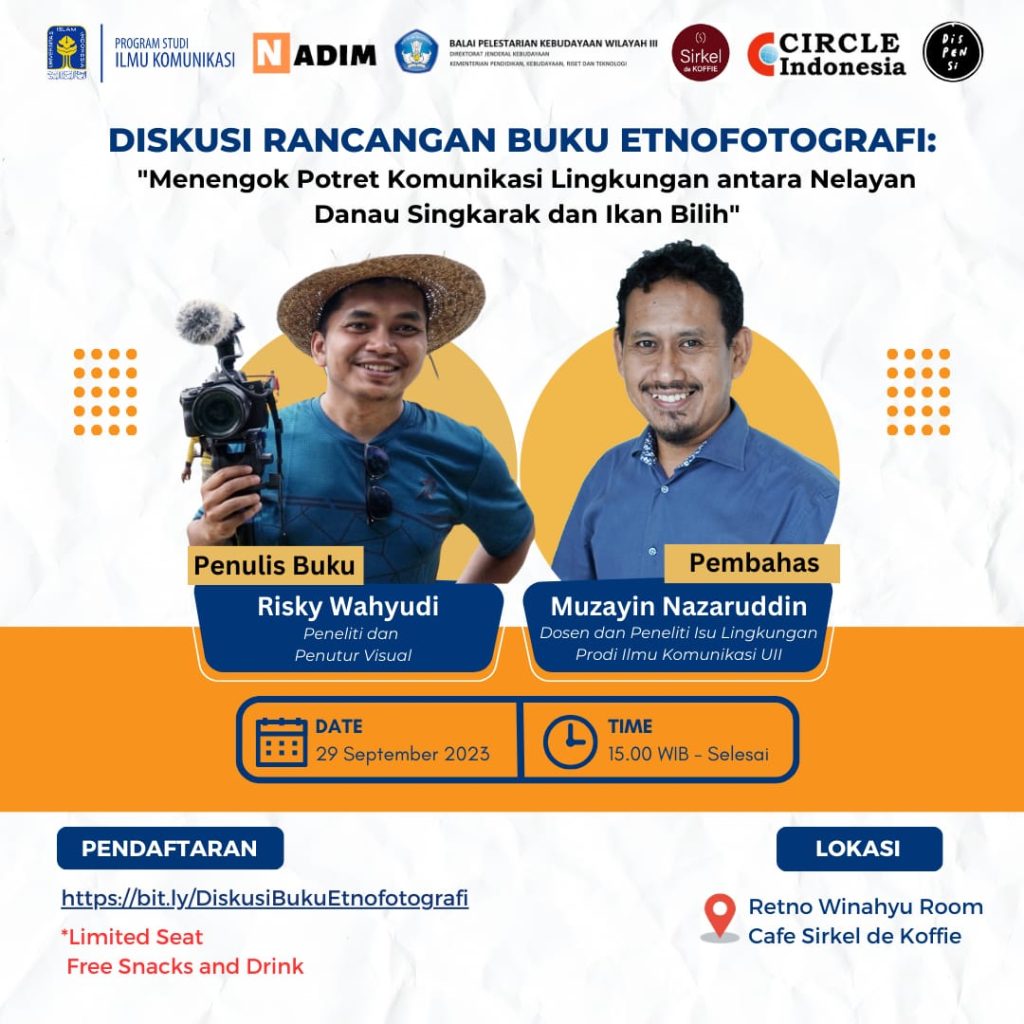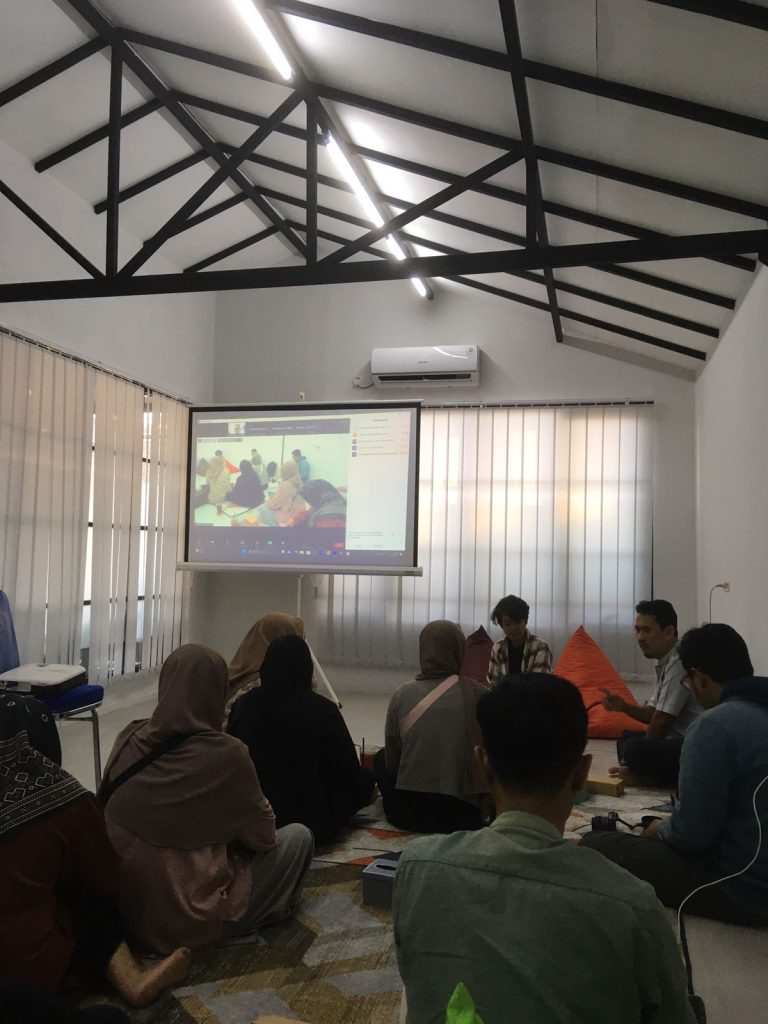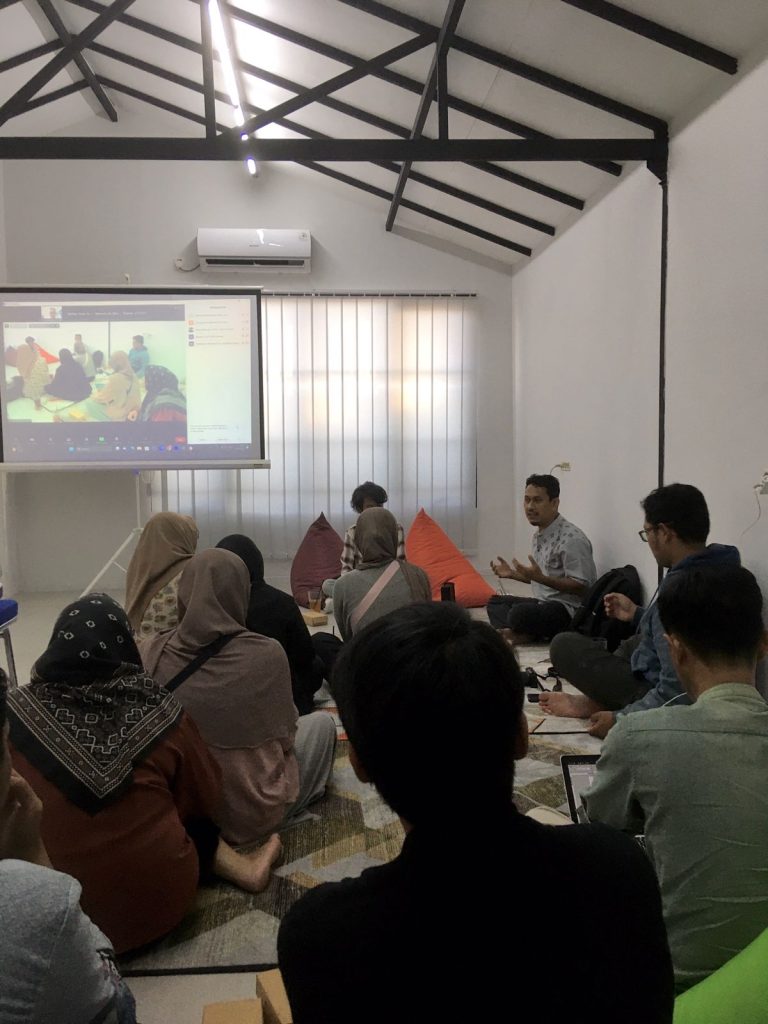Discussion of Ethnographic Book Design: Looking at the Portrait of Environmental Communication between Lake Singkarak Fishermen and Ikan Bilih
- admin
- Oct, 19, 2023
- Youth and Climate Justice, Youth Discussion
- Comments Off on Discussion of Ethnographic Book Design: Looking at the Portrait of Environmental Communication between Lake Singkarak Fishermen and Ikan Bilih
By: PDMA (Pusat Dokumentasi Media Alternatif) Nadim UII
On Friday, September 29th, 2023, Nadim’s PDMA (Alternative Media Documentation Center) collaborated with the DISPENSI (Communication Discussion and Research) community to host an “Ethnographic Book Design Discussion: Looking at Portraits of Environmental Communication between Lake Singkarak Fishermen and Ikan Bilih” in a hybrid format. The event featured Mr. Risky Wahyudi, S.I.Kom, a lecturer at the UII Communication Science Study Program, as a speaker, and Mr. Muzayin Nazaruddin, a lecturer and researcher on environmental issues at the same program, as a discussant. The discussion was held in the Retno Winahyu Room at Café Sirkel de Koffie from 3:30 PM to 6:00 PM and was attended by academics.
The discussion titled “Looking at the Portrait of Environmental Communication between Lake Singkarak Fishermen and Bilih Fish” is a design for Risky Wahyudi’s book. It is an ethnographic study that explores the relationship between Lake Singkarak fishermen and Bilih Fish. The lake is one of the 15 National Priority Lakes, as stated in Presidential Decree No. 60 of 2021, Article 3, Paragraph 1 which emphasizes the importance of conserving National Priority Lakes. From the observations made in the field, it was found that several criteria determine a lake as a national priority. Lake Singkarak, for instance, exhibits increased sedimentation, decreased water quality, and a decrease in biodiversity, which leads to ecological, economic, and socio-cultural problems for the community.
The main purpose of this book is to provide a platform for fishermen to share their knowledge and experiences related to Bilih Fish. The book includes several interesting discussions such as human interactions with the environment, fishermen’s perspectives on Bilih Fish, memories of Lake Singkarak, how Bilih Fish has become a local identity, and who Lake Singkarak fishermen are. Mr. Muzayin stated that books like this are rare, as communication studies in Indonesia generally limit discussions to environmental communication, such as how humans communicate about the environment, how mass media discusses environmental issues, how political actors use rhetoric to talk about environmental issues, and how policymakers discuss the environment.
It is often considered that an environment is a silent object, but what makes this book fascinating is that it places the environment as a subject. During the discussion, Mr. Muzayin provided some insightful ideas, including exploring cultural narratives such as myths that contain the origins of Lake Singkarak and humans in Lake Singkarak, examining the dynamic relationship between nature and culture, and exploring the daily interaction practices that exist between humans and Lake Singkarak. The discussion went smoothly and was interesting, with many members of the audience providing valuable feedback.



Recent Posts
- In Your Hands: One Earth for All
- CIRCLE Climate Discussion #2: City Adaptation Efforts in the Global Era Boiling – Delves into Climate Phenomena and Climate Adaptation Methods in the Urban Sphere.
- ”Hybridity”, From Photobook to Documentary Film: A Presentation of Visual Works that Explore Environmental Issues through Various Landscapes of Sense
- CIRCLE Climate Discussion #1: Mapping and Enriching Our Climate Dictionary for Productive Climate Discourse
- Regional Community Consolidation in Yogyakarta in Welcoming the Global Power Up Action: Transition to Solutions
Recent Comments
Archives
- January 2024
- December 2023
- November 2023
- October 2023
- August 2023
- June 2023
- May 2023
- March 2023
- October 2022
- September 2022
- March 2022
- February 2022
- July 2021
- December 2020
- July 2020
- June 2020
- May 2020
- December 2019
- November 2019
- August 2019
- July 2019
- May 2019
- April 2019
- January 2019
- September 2018
- August 2018
- July 2018
- January 2018
- November 2017
- October 2017
- September 2017
- August 2017
- July 2017
- June 2017
- May 2017
- April 2017
- March 2017
- December 2016
- November 2016
- October 2016
- July 2016
- June 2016
- April 2016
- January 2016
- December 2015
- September 2015
- July 2015
- May 2015
- January 2015
- December 2014
- August 2014
- April 2014
- March 2014
- February 2014
- January 2014
- December 2013
- November 2013
- October 2013
- September 2013
